In Photos: Ancient Graffiti Discovered in Aphrodisias
Graffiti has been discovered scratched into the walls of the city of Aphrodisias, in modern-day Turkey. The hundreds of graffiti messages reveal what the city's inhabitants were up to so long ago — gladiator combat, chariot racing, religious fighting and sex. Here's a look at some of the newly deciphered graffiti. [Read the full story on Aphrodisias graffiti discovery]
Ancient graffiti
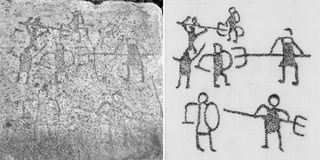
Researchers at Aphrodisias, an ancient city in modern-day Turkey, have discovered and recorded hundreds of examples of graffiti that date back more than 1,500 years. The graffiti seen here was found in a stadium and shows gladiator fights between a retiarius (a type of gladiator armed with a trident and net) and a secutor (a type of gladiator equipped with a sword and shield).
At top the retiarius emerges victorious and holds his trident over the wounded secutor. At middle the battle between the two types of gladiators rages on with a referee, at left, overseeing it. At bottom a secutor is seen chasing a fleeing retiarius. Researchers believe that a spectator carved scenes that he had seen in the arena. (Drawing by Nicholas Quiring, photograph courtesy Angelos Chaniotis.)
Juvenile scratchings
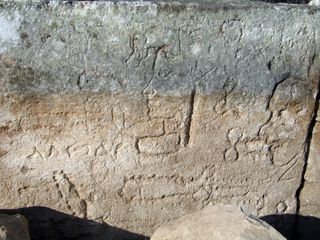
Graffiti containing sexual imagery was also found in the city. Numerous penises as well as faces can be seen here. The penises are shown in a variety of ways, one of them appears to be inside the mouth of a face. (Photograph courtesy Angelos Chaniotis.)
Conflicting beliefs
Sign up for the Live Science daily newsletter now
Get the world’s most fascinating discoveries delivered straight to your inbox.
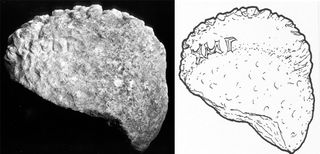
Christians, Jews and those following polytheistic religions lived in Aphrodisias, coming into conflict at times. This statue is the sculptured head of a governor who followed (and/or supported) polytheistic beliefs. A Christian sculptor has noted their disapproval writing down a series of letters which means "Mary gives birth to Jesus." (Credits: R.R.R. Smith, NYU Excavations at Aphrodisias.)
A shopping area

The city had a large Jewish population. Many Jewish traders set up shop in in an abandoned temple complex known as the Sebasteion. This image shows a Hanukkah menorah, a nine candle lamp that would be lit during the Hanukkah festival. This may be one of the earliest depictions of a Hanukkah menorah. (Photograph courtesy Angelos Chaniotis.)
Magic spells

A depiction of a person with a snake wrapped around their head. The snake held magical properties in the ancient world and this graffiti may be tied to some kind of magic. (Photograph courtesy Angelos Chaniotis.)
Artistry at work
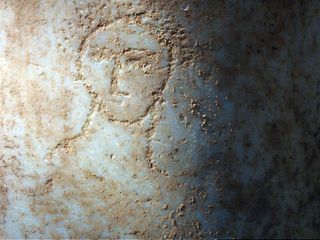
Some beautiful depictions of faces were found in the city. This image is from a house. (Photograph courtesy Angelos Chaniotis.)
Developing a talent
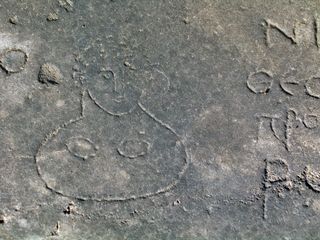
Another image of a face, it was found in the theater. (Photograph courtesy Angelos Chaniotis.)
Remembering experiences
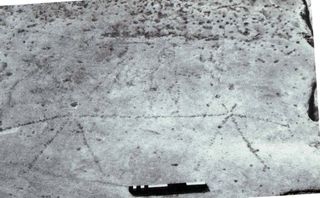
This image shows an acrobat balancing on a tightrope. It was found on the pavement of the theater stage. (Photograph courtesy Angelos Chaniotis.)

Owen Jarus is a regular contributor to Live Science who writes about archaeology and humans' past. He has also written for The Independent (UK), The Canadian Press (CP) and The Associated Press (AP), among others. Owen has a bachelor of arts degree from the University of Toronto and a journalism degree from Ryerson University.
Most Popular


